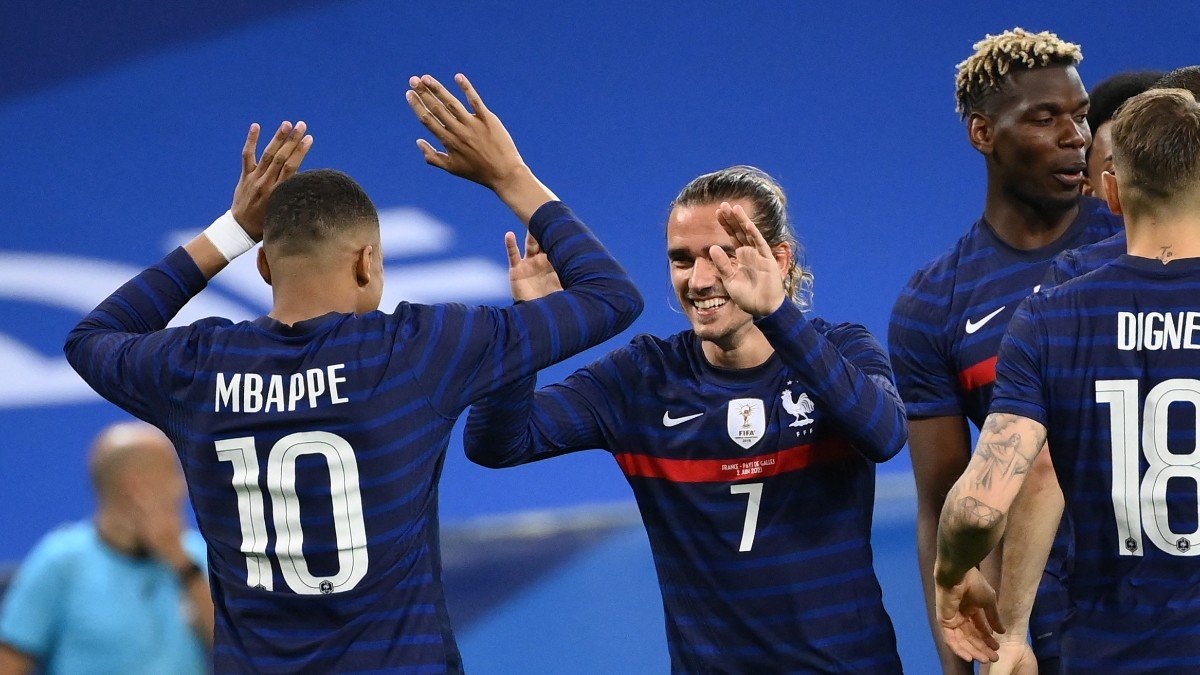Jakarta Fixed Matches Today
Jakarta Fixed Matches Today
Betting Safe Fixed Odds
Day: Sunday Date: 23.06.2024
First Match: Scotland – Hungary | Tip: Over 1.5 | Odds: 1.30 | Result: 0:1 | LINK | Lose
Second Match: Switzerland – Germany | Tip: X2 | Odds: 1.20 | Result: 1:1 | LINK | WON
Third Match: Pyramids – Arab Contractors | Tip: 1 | Odds: 1.30 | Result: 3:1 | LINK | WON
E-mail support: fixedmatchgloball@gmail.com
WhatsApp support: +1 (508) 939-3661
Username for Telegram: @fmatchglobal
Introduction to Scandinavian Football
Additionally Scandinavian football, a blend of grit, determination, and tactical brilliance, has steadily carved its niche in the global football scene. From the icy fjords of Norway to the bustling streets of Stockholm and the tranquil Finnish landscapes, football unites these diverse nations. This sport, deeply rooted in the culture, showcases a unique style that reflects the resilience and passion of its people. Fans are eagerly searching for Jakarta fixed matches today to place their bets.
Historical Evolution
The journey of Scandinavian football dates back to the early 20th century. In the 1900s, Sweden, Norway, and Denmark began forming organized leagues, setting the foundation for competitive football. Additionally the Swedish Allsvenskan, established in 1924, and Denmark’s Superliga, founded in 1991, marked significant milestones. These leagues fostered local talent and cultivated a competitive spirit, gradually putting Scandinavian football on the map. As the years progressed, Norway’s Eliteserien, launched in 1937, joined the ranks, further solidifying the region’s footballing credentials. Finland, although later to the professional league structure with the Veikkausliiga in 1990, has rapidly caught up, showcasing the sport’s growing popularity.
Iconic Clubs and Their Legacies
Scandinavia boasts several iconic football clubs that have left an indelible mark on the sport. In Sweden, AIK Fotboll and Malmö FF have dominated the Allsvenskan, producing numerous national team players and achieving success in European competitions. Malmö FF, in particular, reached the European Cup final in 1979, highlighting the club’s historical significance. Denmark’s FC Copenhagen and Brøndby IF have showcased Danish football’s prowess in the Superliga, consistently competing in European tournaments and bringing home multiple domestic titles. Meanwhile, Norway’s Rosenborg BK has set the standard in the Eliteserien with multiple league titles and notable Champions League performances, especially during the 1990s. Finnish clubs like HJK Helsinki have also started making their presence felt, particularly in recent European competitions.
Influential Players and Legends
Scandinavian football has given rise to many legendary players who have made significant impacts both domestically and internationally. Sweden’s Zlatan Ibrahimović, with his extraordinary skill and charisma, has become a global icon, winning league titles in Italy, Spain, France, and England. Denmark’s Michael Laudrup, known for his elegance on the ball and his visionary playmaking, enjoyed successful stints at Barcelona and Real Madrid. Norway’s Ole Gunnar Solskjær, famed for his goal-scoring prowess at Manchester United, including the iconic winning goal in the 1999 Champions League final, is another notable figure. These players have not only elevated their national teams but have also inspired countless young talents, becoming role models across the world.
Youth Development and Grassroots Programs
The success of Scandinavian football can be attributed to robust youth development systems and grassroots programs. Countries like Sweden and Denmark emphasize nurturing young talent from an early age through well-structured academies and community-based clubs. The focus on technical skills, tactical understanding, and physical fitness begins at the grassroots level. Norway’s Football Association (NFF) has implemented the “Norway Cup,” one of the world’s largest youth football tournaments, which provides a platform for young talents to showcase their skills. Finland’s youth academies, although newer, are rapidly developing, ensuring a steady stream of talent for the national teams and clubs. The term Jakarta fixed matches today has been trending among football enthusiasts.

Tactical Approaches and Playing Styles
Scandinavian football is characterized by its unique tactical approaches and distinct playing styles. Swedish football often emphasizes strong defensive organization combined with swift counter-attacks. This tactical discipline has been evident in Sweden’s national team performances, particularly in major tournaments. Danish football, on the other hand, is known for its technical proficiency and fluid attacking play, often influenced by Dutch football philosophies. Norway traditionally relied on physicality and direct play, but recent years have seen a shift towards more technical and possession-based football. Finland’s playing style focuses on teamwork and resilience, with a strong emphasis on collective effort over individual brilliance.
International Success and Tournament Performances
Additionally Scandinavian national teams have achieved notable success on the international stage, reflecting the region’s footballing prowess. Sweden’s memorable run to the World Cup final in 1958, where they finished as runners-up to Brazil, remains a significant achievement. In 1994, Sweden secured a third-place finish in the World Cup, showcasing their consistency. Moreover Denmark’s triumph at the 1992 UEFA European Championship, where they won against Germany in the final, stands out as one of the greatest underdog stories in football history. Norway’s national team has qualified for multiple World Cups and European Championships, with their golden generation in the 1990s making a significant impact. Additionally Finland’s recent qualification for Euro 2020 marked a historic milestone, highlighting their rapid progress in international football. Authorities are cracking down on Jakarta fixed matches today to maintain the integrity of the sport.
Women’s Football in Scandinavia
Women’s football in Scandinavia has also flourished, with the region producing some of the world’s best female players and teams. Sweden’s women’s national team has consistently been among the top contenders in international tournaments, securing a runner-up finish in the 2003 FIFA Women’s World Cup and multiple Olympic medals. Norway’s women’s team won the FIFA Women’s World Cup in 1995 and the UEFA Women’s Euro in 1987 and 1993, establishing themselves as pioneers in the women’s game. Denmark’s women’s team has also made significant strides, reaching the final of the UEFA Women’s Euro in 2017. Finland’s women’s football is on the rise, with increasing participation and improved performances in recent years.
Coaching and Managerial Influence
Moreover Scandinavian football has benefited from the influence of several visionary coaches and managers who have left a lasting impact. Sweden’s Sven-Göran Eriksson, who managed top clubs like Lazio and the England national team, is renowned for his tactical acumen. Moreover Danish coach Morten Olsen, who had a long tenure with Denmark’s national team, is celebrated for his contributions to Danish football’s development. Norway’s Egil “Drillo” Olsen, known for his pragmatic approach, led Norway to their highest FIFA ranking in the 1990s. Finland’s Markku Kanerva has recently gained recognition for guiding the national team to their first-ever major tournament qualification. These coaches have not only achieved success but have also influenced the next generation of managers.
Club Success in European Competitions
Scandinavian clubs have made significant strides in European competitions, further elevating the region’s footballing reputation. Malmö FF’s run to the European Cup final in 1979 remains a historic achievement for Swedish club football. FC Copenhagen’s consistent performances in the UEFA Champions League and Europa League have brought Danish football into the European spotlight. Moreover Rosenborg BK’s remarkable success in the 1990s, including multiple group stage appearances in the Champions League, showcased Norway’s club football strength. HJK Helsinki’s participation in European competitions has highlighted the growing competitiveness of Finnish clubs. These achievements underscore the capability of Scandinavian clubs to compete at the highest levels. Rumors about Jakarta fixed matches today have sparked debates on social media.
Impact of Infrastructure and Facilities
The development of football infrastructure and facilities has played a crucial role in the growth of Scandinavian football. State-of-the-art training centers, modern stadiums, and well-maintained pitches have provided the necessary environment for players to develop their skills. Sweden’s Tele2 Arena, Denmark’s Parken Stadium, Norway’s Ullevaal Stadium, and Finland’s Olympic Stadium in Helsinki are prime examples of world-class facilities that host both domestic and international matches. These infrastructures not only enhance the matchday experience for fans but also contribute to the overall growth and professionalism of football in the region. The phrase Jakarta fixed matches today is often associated with illegal betting rings.
Influence of Fans and Football Culture
The passionate and loyal fanbase across Scandinavia significantly contributes to the vibrant football culture. Supporters’ groups, known for their unwavering dedication, create electrifying atmospheres in stadiums. The rivalries between clubs, such as the Stockholm derbies in Sweden or the Copenhagen derby in Denmark, add an extra layer of excitement to the domestic leagues. Norway’s football culture, deeply embedded in community and local identity, brings people together from all walks of life. Finland’s growing fan culture is a testament to the sport’s increasing popularity. This passionate support not only motivates players but also enhances the overall footballing experience.
Role of Media and Broadcasting
Additionally media and broadcasting play a pivotal role in the promotion and development of Scandinavian football. Extensive coverage by local and international sports networks ensures that fans stay connected with their favorite teams and players. In Sweden, channels like C More and SVT provide comprehensive coverage of the Allsvenskan and national team matches. Denmark’s TV3 Sport and DR1 offer in-depth analysis and live broadcasts of the Superliga. Norway’s TV2 and NRK cover the Eliteserien extensively, while Finland’s Yle and MTV3 ensure that Finnish football reaches a wide audience. The media’s role in highlighting stories, providing expert analysis, and bringing football closer to the fans cannot be overstated.
Ht Ft Fixed Matches – Halftime Fulltime Fixed Matches – Fixed Matches 1×2
Challenges and Future Prospects
Despite its successes, Scandinavian football faces challenges that need addressing to sustain growth. Financial disparities with larger European leagues pose a significant hurdle, often resulting in top talent moving abroad. Maintaining competitiveness in European competitions requires strategic investments in youth development, infrastructure, and club management. However, the future looks promising, with increasing investments, improved facilities, and a steady stream of talent emerging from youth academies. Collaborative efforts among Scandinavian countries to share resources and knowledge can further enhance the region’s footballing stature.
Conclusion and Legacy
In conclusion, Scandinavian football, with its rich history, influential players, and passionate fanbase, continues to thrive on the global stage. The region’s unique blend of tactical innovation, robust youth development, and community-driven culture sets it apart. As Scandinavian countries continue to invest in their footballing infrastructure and nurture young talents, the future holds immense potential. The legacy of Scandinavian football, characterized by resilience, passion, and excellence, will undoubtedly inspire future generations and contribute to the global footballing landscape for years to come.
